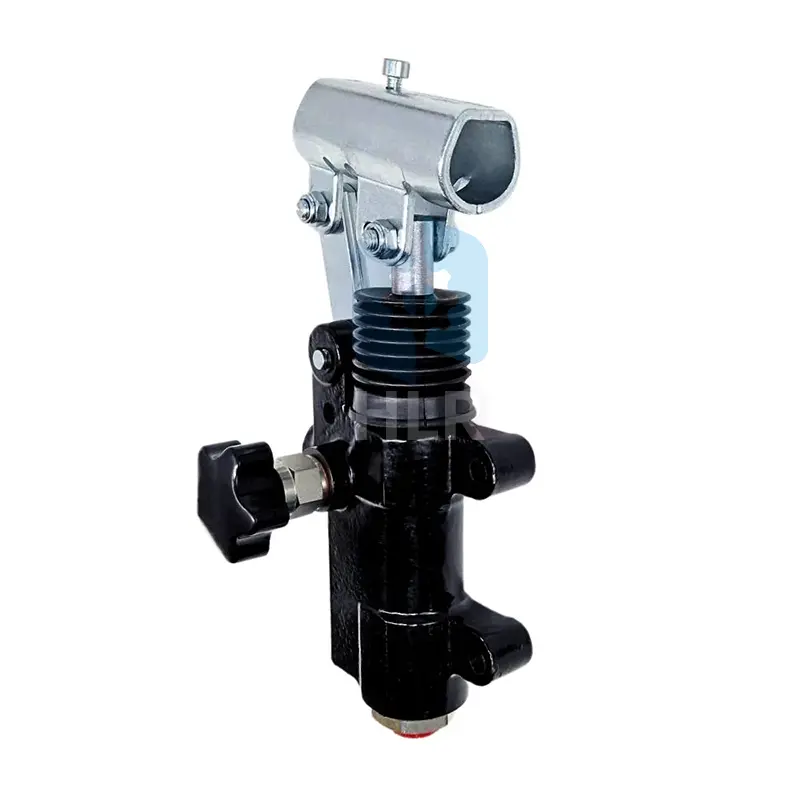What Are Hydraulic Hand Pump Fittings?
2025-01-21
Hydraulic systems are the backbone of many industries, enabling the efficient transmission of power in a wide range of applications. At the heart of these systems is the hydraulic hand pump, a compact and portable device used to generate hydraulic pressure manually. However, the true efficiency and reliability of a hydraulic hand pump depend heavily on its fittings. These small but vital components ensure a secure and leak-proof connection within the system. In this blog, we’ll explore what hydraulic hand pump fittings are, their types, and how to choose the right ones for your applications.
What Are Hydraulic Hand Pump Fittings?
Hydraulic hand pump fittings are connectors designed to join the pump to other hydraulic components, such as hoses, cylinders, or valves. They play a critical role in ensuring the hydraulic fluid flows smoothly and safely under pressure. Fittings must be strong enough to withstand high-pressure environments while maintaining a leak-free connection.
Types of Hydraulic Hand Pump Fittings
Hydraulic fittings come in various types, each suited to specific applications. The most common types include:
1. Threaded Fittings
- These are the most widely used fittings in hydraulic systems. Threaded fittings have internal (female) or external (male) threads that screw together to create a secure connection.
- Examples: NPT (National Pipe Tapered), BSP (British Standard Pipe), JIC (Joint Industry Council), and Metric threads.
2. Compression Fittings
- Compression fittings create a seal by compressing a ferrule or ring around the hydraulic pipe or hose. These are often used in applications requiring high precision.
3. Quick-Connect Fittings
- These fittings allow for rapid connection and disconnection of hydraulic lines without tools. They are ideal for applications that require frequent assembly and disassembly.
- Example: Flat face or ball-lock quick couplers.
4. Flared Fittings
- Flared fittings have a conical design that creates a strong seal when tightened. They are commonly used in high-pressure systems and are available in various standards, such as JIC and SAE.
5. Elbow and Tee Fittings
- These fittings enable changes in direction or the addition of multiple hydraulic lines. Elbow fittings create a 45° or 90° angle, while tee fittings allow three connections in a T-shape.
6. Swivel Fittings
- Swivel fittings are used where the hydraulic line may need to rotate or move. They prevent twisting and wear on hoses during operation.
How to Choose the Right Hydraulic Hand Pump Fittings
Selecting the correct fittings for your hydraulic hand pump is essential for the system's performance and safety. Here are some factors to consider:
1. Compatibility with System Pressure
- Ensure the fitting can handle the maximum operating pressure of your hydraulic system. Overloading a fitting beyond its pressure rating can lead to leaks or catastrophic failure.
2. Thread Type and Size
- Match the thread type and size of the fitting to the corresponding components. Using mismatched threads can result in improper sealing and leaks.
3. Material Suitability
- Choose a material that aligns with the operating conditions, such as temperature, pressure, and exposure to corrosive elements.
4. Seal Type
- Depending on the application, you may need a specific type of seal, such as O-rings or tapered threads, to prevent fluid leakage.
5. Ease of Installation
- Consider fittings with features like quick-connect mechanisms or swivel capabilities to simplify installation and maintenance.
Maintenance Tips for Hydraulic Hand Pump Fittings
To ensure the longevity and reliability of your hydraulic fittings, follow these maintenance practices:
1. Regular Inspections
- Check fittings for signs of wear, corrosion, or leaks. Replace damaged fittings immediately.
2. Proper Cleaning
- Keep fittings clean to prevent contamination of the hydraulic fluid, which can damage other components in the system.
3. Torque Specifications
- Follow manufacturer recommendations for tightening fittings. Over-tightening or under-tightening can compromise the seal.
4. Use Compatible Components
- Ensure all fittings, hoses, and pumps are compatible to avoid stress or damage to the connections.
Applications of Hydraulic Hand Pump Fittings
Hydraulic hand pump fittings are used in a wide range of applications, including:
- Maintenance and Repair: Portable hydraulic hand pumps equipped with robust fittings are often used for maintenance tasks, such as lifting equipment or pressing bearings.
- Industrial Machinery: Fittings connect hand pumps to cylinders and valves in manufacturing and assembly operations.
- Construction: Hydraulic hand pumps with fittings are used for tasks like lifting, tensioning, and clamping in construction projects.
- Automotive: They are commonly used in automotive repair for applications like brake bleeding or clutch system maintenance.
Hydraulic hand pump fittings are a critical component of hydraulic systems, ensuring smooth and leak-free operation. By understanding their types, materials, and selection criteria, you can enhance the performance and reliability of your hydraulic systems.



